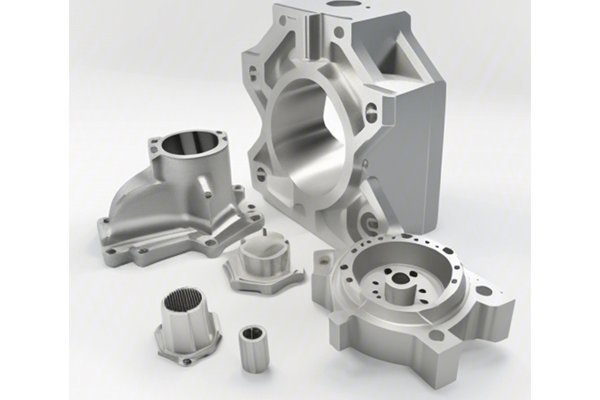: The Rise of Precision Machining in Manufacturing
Did you know that the global CNC machining market is projected to reach a staggering $83.39 billion by 2025? This explosive growth underscores the increasing reliance on computer-numerical control (CNC) machining for a wide variety of industries, especially those needing high-tolerance components. When it comes to producing intricate parts with precision, CNC plastic machining stands out as a vital process. In this blog, we will thoroughly explore the benefits of CNC plastic machining specifically for high-tolerance products, discussing its applications, the technology involved, and why it’s becoming an indispensable technique in modern manufacturing.
—
CNC plastic machining is the process of using computer-controlled machines to cut, shape, and manipulate plastic materials into specified designs. It leverages the precision of technology to achieve a degree of accuracy that is often unattainable with manual processes. This is especially important when creating high-tolerance products that require minute specifications to fit seamlessly into applications like aerospace, automotive, and medical equipment.
1.1 Types of Plastics Commonly Used
Understanding the different types of plastics is crucial for selecting the right material for your CNC machining project:
Each of these materials has unique properties and applications, making the choice critical for achieving the desired quality and performance.
—
The combination of CNC machining and plastic materials offers numerous advantages that can significantly enhance the manufacturing process. Below, we outline some of the most compelling benefits:
2.1 High Precision Tailored for Complex Designs
One of the key advantages of CNC plastic machining is the capability to produce high-precision components consistently. Tolerance levels can reach as tight as ±0.005 inches, which is paramount in industries such as aerospace and medical where even the slightest deviation can lead to catastrophic failures. The advanced software used in CNC machines allows for complex designs to be executed flawlessly.
2.2 Versatility in Applications
From intricate medical device components to complex automotive parts, CNC plastic machining is versatile enough to cater to a broad range of applications. The ability to program machines to create custom designs allows manufacturers to adapt quickly to market needs without incurring high costs or extended lead times.
2.3 Time Efficiency and Economic Benefits
In today’s fast-paced manufacturing environment, time is money. CNC machining significantly reduces the time required to produce parts compared to traditional machining methods. High production rates combined with minimal downtime lead to lower prices per unit, allowing businesses to improve their profit margins.
2.4 Reduced Waste Generation
CNC machining offers another critical advantage: material utilization. Unlike traditional machining processes that may produce excess material waste, the CNC process is designed to optimize material usage. This not only contributes to sustainability efforts but also decreases the overall costs associated with excess material.
—
High-tolerance products manufactured via CNC plastic machining can be observed across several industries. Below, we’ll explore a few prominent applications:
3.1 Medical Devices
The medical device industry relies heavily on CNC plastic machining for manufacturing components like surgical instruments, housings for diagnostic equipment, and fluid management devices. High tolerance is essential here, as any deviation from specifications can result in medical errors or device failures.
3.2 Aerospace Components
In the aerospace industry, components must perform under extreme conditions, making high tolerance critical. CNC machining is used to create lightweight yet strong components, such as casings and interior panels, that meet strict aviation standards.
3.3 Automotive Parts
The automotive sector leverages CNC plastic machining for manufacturing everything from dashboard components to safety devices. High tolerance is essential not just for functionality but also for compliance with safety regulations.
—

Understanding the CNC plastic machining process is essential for appreciating its advantages. Let’s delve into the key steps involved:
4.1 Design Phase
The first phase is the design, where a digital model of the component is created using CAD (Computer-Aided Design) software. This model serves as a blueprint for the CNC machine.
4.2 Tool Selection
Selecting the appropriate tooling is critical for achieving the desired finishes and tolerances. Different tools may be required depending on the type of plastic and the complexity of the design.
4.3 Machining Process
With design and tooling set, the machine is programmed to execute the design. The CNC machining process involves movements along various axes (3-axis, 4-axis, or even 5-axis) to cut and shape the material with utmost precision.
4.4 Quality Control
Post-machining, the products undergo rigorous inspections to ensure they meet the required specifications. Quality checks often include dimensional inspections, visual assessments, and sometimes functional testing.
—
Finding a suitable CNC plastic machining service can be daunting. Here are some essential criteria to consider:
5.1 Expertise and Experience
Look for a machining company with a proven track record in your industry. Experience often translates to better quality, more efficient processes, and a deeper understanding of the materials involved.
5.2 Technological Capabilities
Ensure that the partner uses the latest CNC technology, as advancements in machinery can significantly influence the quality and precision of the final products.
5.3 Quality Certifications
Certifications such as ISO 9001 can provide assurance of the quality management systems in place, ensuring that the machining process aligns with international quality standards.
5.4 Customer Service
A responsive and supportive customer service team can make a substantial difference, particularly in complex projects. Clear communication can prevent errors and streamline the production process.
—
The landscape of CNC machining is continuously evolving. Here are some trends to watch:
6.1 Automation and AI Integration
Integrating artificial intelligence and automation into CNC processes is expected to enhance efficiencies and reduce human error, leading to better quality control and faster production.
6.2 Advances in Materials
As the demand for high-performance materials escalates, expect advances in plastic formulations that offer better strength, thermal resistance, and other desirable properties.
6.3 Sustainability Initiatives
Sustainability is a growing concern for manufacturers. Many are looking to adopt eco-friendly practices, including using recycled plastics in CNC machining.
—
CNC plastic machining is not just a manufacturing trend; it’s a revolution in producing high-tolerance products across various industries. The technology offers unparalleled precision, versatility, and economic benefits that modern manufacturers can’t afford to overlook. As we’ve discussed, the tailoring of components for specific applications, the efficient use of materials, and the ability to adapt quickly to market needs make CNC plastic machining a cornerstone of efficient manufacturing.
In conclusion, as you contemplate your next manufacturing project, consider the immense advantages that CNC plastic machining can provide. The future lies in precision engineering—let CNC plastic machining be your partner in achieving unparalleled quality and efficiency. Remember, the right choice today can set you up for success tomorrow.






